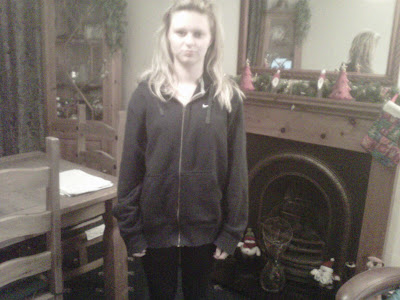Lauren (Hannibal Rising):
The main character Hannibal is a male in his late teens (19-20 years old). He is a bit unstable mentally because he ends up eating his sister, during a traumatic experience he has had. He is also interested in Anatomy, because he finds different ways of stopping people from fighting, so he can torture them.
The film opens in World War II, and Hannibal and his family are in a safe house in the middle of nowhere. Soviets then invade the area, and kill the parents and captures the kids.
The main ideas of costume are normal, for example for Hannibal he wears ordinary casual clothes. The main costumes are from the Soviet soldiers who are wearing uniform and this creates a authoritative image.
The overall lighting is very dark even though its mainly in daytime, this is to create a sinister effect. The main setting is the middle of nowhere which shows there is no escape.
Here is Hannibal attempting his revenge on the Soviets.
Sam (Paranormal Activity 2):
The main characters in this film are Kristi, Dan & Hunter. It is a typical family, were Kristi and Dan are married and have a child called Hunter. The parents are very laid back, until the demons enter the household which is when they become frightened. Hunter is only a baby, and is haunted by the demons.
The film opens with the parents coming back to the house with their newborn baby. Further on in the film, hauntings start to happen in the opening such as doors opening and closing and objects moving. The hauntings become worse during the end of the film.
As it's filmed in a home video style, all of the characters are wearing every day casual clothes, so nothing in particular which creates an effect.
The main lighting is sunlight and nighvision. Also the setting is all set in one house, which seems like an every day family home.
Here is Kristi in a dark lighting as she is silhouetted and haunted by the demons.
Raja (The Haunting in Connecticut):
The main character is a teenager called Matt who has terminal cancer and is weeks away from death. He is usually in a lot of pain due to the radiotherapy he has.
In the opening it shows Matt coming back from hospital in a lot of pain, and in a last minute move, they move to Connecticut where the hospital is based. Matt finds a basement, where he sees visions of killings and ghosts.
The main costume is basic, and nothing to create an effect as they are normal people.
The overall lighting in and out of the house is mainly dark to create a scary effect and fear of the unknown. The setting is all in the house, which is where all the hauntings occur. The house is very old and outdated which makes it a prime location for hauntings to appear.
Here is the main character Matt, with his mother as he is having an unstable moment, where he has ripped his nails off by scratching the wall. We can see he becomes mentally unstable.

















































